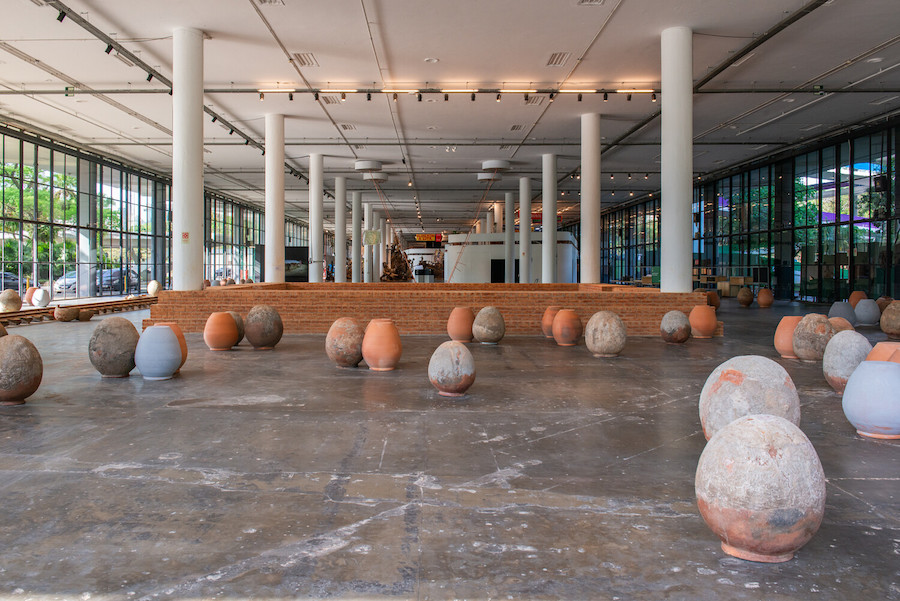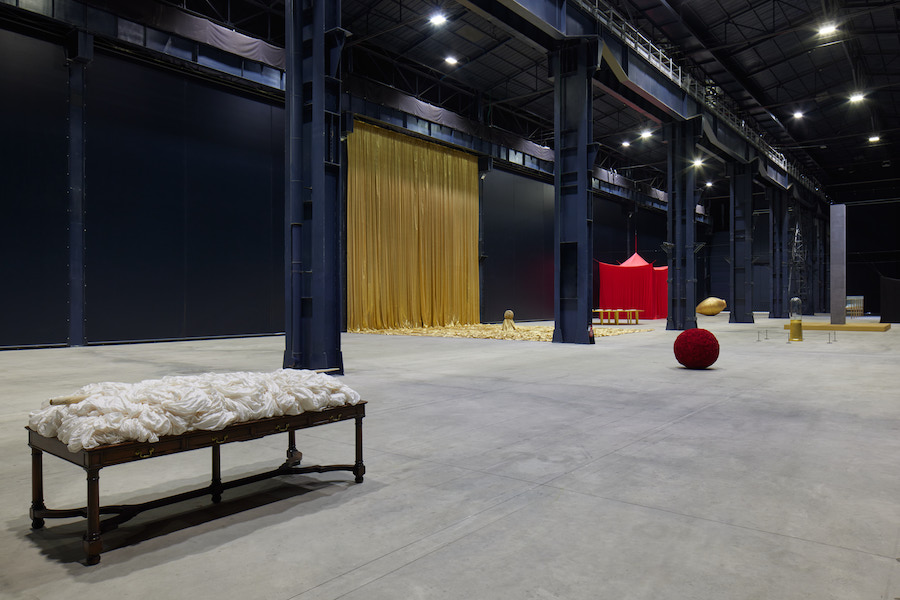

35th Bienal de São Paulo
Choreographies of the impossible
The idea of forming a group with a horizontal structure without the figure of a chief curator was suggested by the team of curators and is central to their project for the 35th Bienal. Diane Lima is an independent curator, writer and researcher; Grada Kilomba, an interdisciplinary artist, writer and academic; Hélio Menezes is a curator, anthropologist and researcher; and Manuel Borja-Villel is a researcher and art historian.
How can bodies in movement be able to choreograph the possible, within the impossible? The proposal for the 35th Bienal de São Paulo emerges as a mutual project around multiple possibilities to choreograph the impossible. As the title already suggests, it is an invitation to radical imaginations about the unknown, or even about what figures as im/possible.
We employ the term choreography to highlight the practice of drawing sequences of movements across time and space, generating multiple and new fractions, forms, images and possibilities, despite all the infeasibility and denial. We are interested in the rhythms, tools, strategies, and technologies, as well as in all symbolic, economic and juridical procedures that extra-disciplinary knowledges are able to promote, producing thus the flight, the refusal and their poetic exercises.
Here we present the impossible indefinitely, for we comprehend that its generative violence also goes beyond what we can imagine. They are often immeasurable, indescribable and unimaginable. We are concerned, therefore, about describing, without reenacting.
And so the choreography rehearsal begins.
As a curatorial proposal, choreographies of the impossible enunciates a space of experimentation – open to the dances of the unimaginable – that embodies movements capable of transforming what is apparently non-existent into existent. This idea of a choreography is based on the enigmatic nature of the artistic fact and, thus, on everything that is neither worn out nor evident, but rather on what can be named as secret, mystery or as the infinite itself. These are resilient elements, and therefore elements of rupture, of an attempt at freedom, consequently.
The curatorial team (in alphabetical order) is composed of Diane Lima, Grada Kilomba, Hélio Menezes and Manuel Borja-Villel. Our team is a collective, acting horizontally, in a counter-dance. For us, the choreographies begin with our practice, whose principle is the attempt to dismantle hierarchies, ethical and normative procedures that enact the institutional devices’ vertical power, value and violence structures – which, as we all know, the world no longer supports.
(extracted from the press release)

JAMES LEE BYARS
A cura di Vicente Todolí
Fino al 18 febbraio, 24
Pirelli Hangar Bicocca, Milano
James Lee Byars (Detroit, Michigan, 1932 – Il Cairo, 1997), uno degli artisti americani più riconosciuti dagli anni Sessanta a oggi, ha influenzato un’intera generazione nell’ambito dell’arte concettuale e performativa. Con una formazione che spazia dall’arte alla psicologia e alla filosofia, Byars è da sempre affascinato dalla cultura giapponese, che ha influenzato la sua pratica artistica per tutta la vita. Nella sua arte, Byars associa motivi e simboli dei costumi e della civiltà orientale alla sua profonda conoscenza dell’arte e della filosofia occidentale, offrendo una visione unica e personale della realtà e delle sue componenti fisiche e spirituali. Attraverso l’uso di media differenti, come l’installazione, la scultura, la performance, il disegno e la parola, infatti, l’artista ha dato vita a una riflessione mistico-estetica sui concetti di perfezione e ciclicità, sulla figura umana – sulla sua rappresentazione e smaterializzazione –, spesso attraverso il coinvolgimento diretto del pubblico in azioni temporanee o in interventi su larga scala. Centrale nel suo lavoro è il rapporto con il pubblico, che viene chiamato a confrontarsi con l’artista stesso e a rispondere a domande che egli pone in maniera diretta e indiretta con le sue opere.
Dopo oltre trent’anni dalla sua ultima mostra istituzionale in Italia, Pirelli HangarBicocca dedica una retrospettiva a James Lee Byars, raccogliendo opere di grandi dimensioni, realizzate dal 1974 al 1997 e provenienti da collezioni museali internazionali, alcune raramente esposte e presentate in Italia per la prima volta, in cui vengono combinati armoniosamente materiali preziosi e ricercati, come marmo, velluto, seta, foglia d’oro e cristallo, a geometrie minimali e archetipe, come sfere prismi e pilastri, e a oggetti baroccheggianti in un gioco di rimandi simbolici ed estetici tra forma e contenuto. A partire dai molteplici significati allegorici e formali della materia, la mostra si sofferma sulle tematiche che hanno attraversato la pratica dell’artista come la ricerca della perfezione, il dubbio come approccio all’esistenza e la finitudine dell’essere umano, invitando i visitatori a riflettere sulle potenzialità alchemiche dell’arte nel plasmare la realtà.
(Comunicato Stampa)











